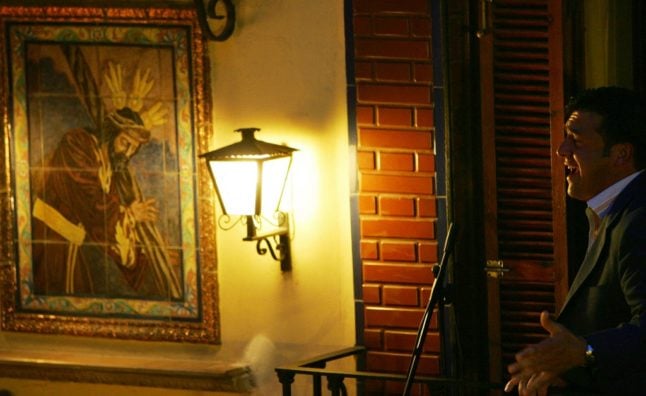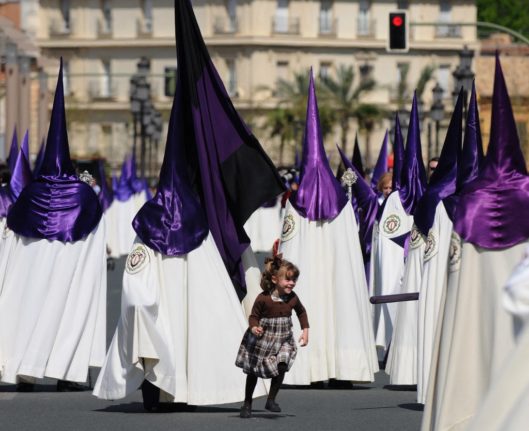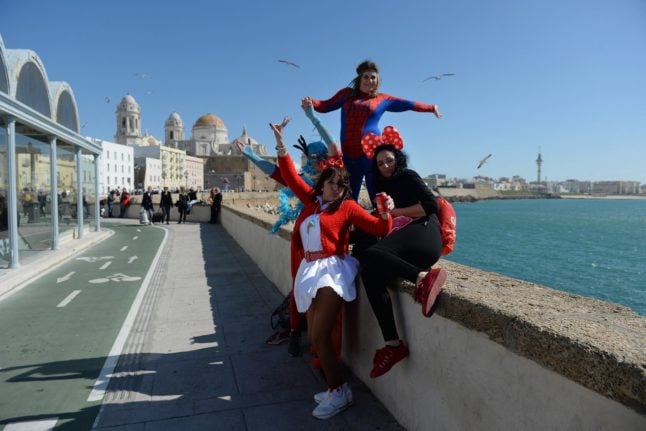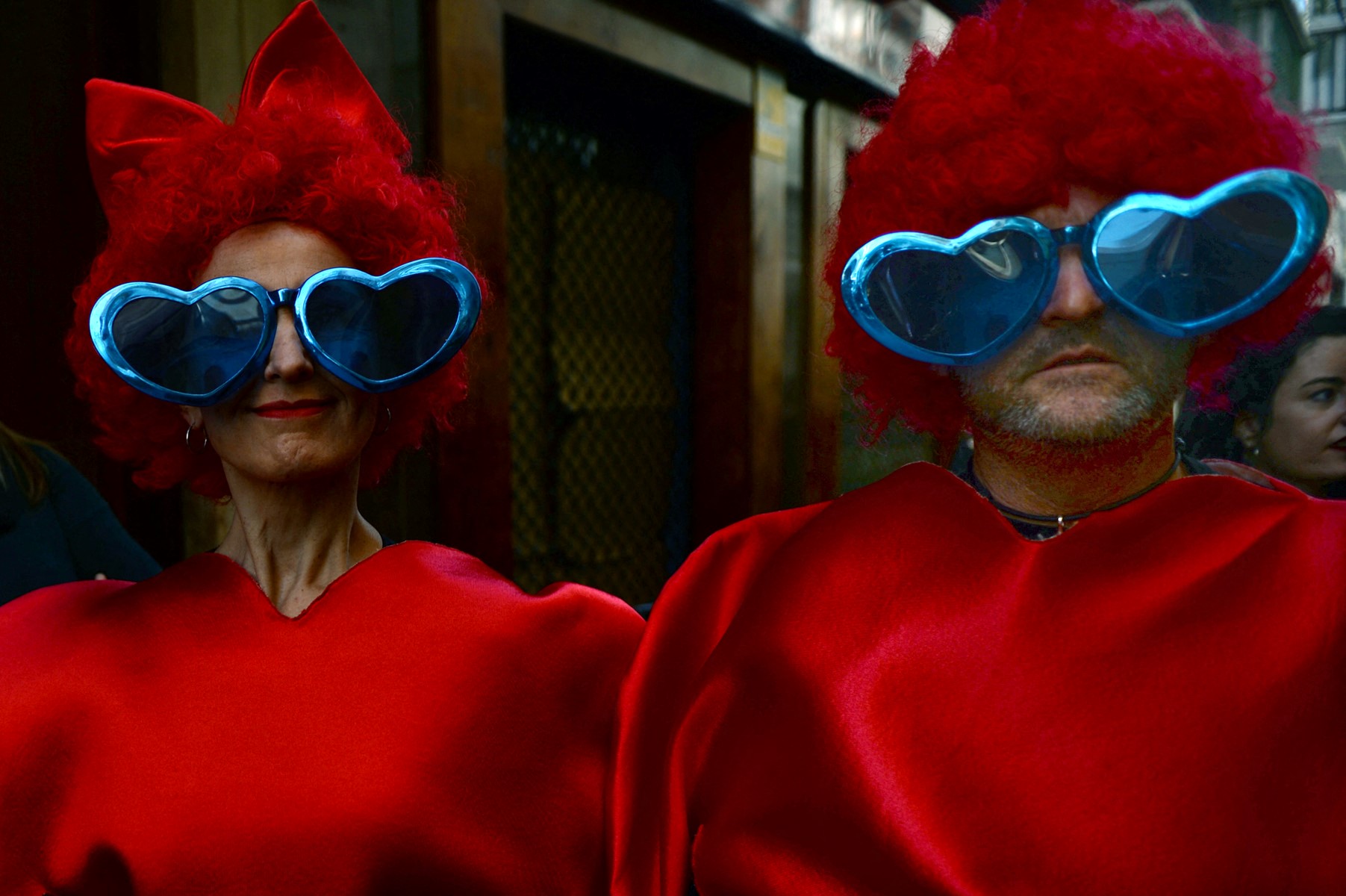In 2024, Easter in Spain lasts from March 24th-March 31st. Holy Week (Semana Santa) is the biggest religious celebration of the year across Spain.
But for many sevillanos, Semana Santa is more important than Christmas and the entire year is a build up. Although Seville and Semana Santa are synonymous with one another, there are also elaborate Semana Santa processions across Andalusia, with Granada and Málaga holding impressive events.
Elaborate processions take place throughout Holy Week. Associations known as Hermandades or ‘brotherhoods’ (whose members take part in the processions) are a strong tradition in Spain, with many dating back to the Middle Ages. Semana Santa processions are also known as ‘penance processions’ and involve members of the brotherhood (known as nazarenos) parading from their church to the city’s cathedral.
Spending Holy Week in the Andalusian capital of Seville, quite possibly the best place to experience Semana Santa in Spain, is a must do experience if you’re in southern Spain.
Here is a calendar of the events you shouldn’t miss out on and other interesting information you should know about Holy Week in Seville.
Key dates and processions for Semana Santa in Seville
Palm Sunday/La Borriquita – A favourite with kids as it reenacts Jesus’ entry into Jerusalem on the back of a donkey. La Hermandad del Amor y pueblo organise the float and it is laden with candles and olive branches.
Holy Monday/Santa Marta – La Hermandad de Santa Marta take care of the transfer of Jesus to the Sepulchre, which sets off from plaza de San Andrés on Palm Sunday.
Holy Tuesday: La Hermandad de estudiantes leaves from the Rectorate of the University of Seville.
Holy Wednesday: La Hermandad de San Bernardo lead things on Holy Wednesday and it’s worth a visit.
Holy Thursday/La Madrugá – Maybe the most famous procession in Spain, Sevilla’s early morning La Madrugá procession takes place on Holy Thursday and includes several brotherhoods throughout the early hours.
Good Friday/El Cachorro – Good Friday procession is led by the la Hermandad del Cachorro.
Holy Saturday: the weekend procession led by la Hermandad del Santo Entierro can’t be missed and has several stops along the way including the Triumph of the Holy Cross over Death, the Lying Jesus and the Passage of the Virgin.
Easter Sunday: The last procession of Seville’s Semana Santa every year, led by procession of the la Hermandad de la Resurrección, focuses on the resurrection story and is very dramatic. A must see – if you can find space!

What you should know about Semana Santa in Seville:
The oldest brotherhoods
Seville has some of Spain’s oldest brotherhoods that are worth checking out, if you can get a spot along the route. La Hermandad del Silencio, founded in 1355, is believed to be the oldest, and la Hermandad de los Negros was founded in 1394,la Cofradía Vera Cruz in 1448, and la Hermandad del Santo Entierro sometime in the fifteenth century.
These brotherhoods have the most tradition, often the most nazarenos, and have some of the most popular procession floats and routes.
Food
Like any holiday in Spain, food and drink plays a big part in the traditions. Semana Santa is no different, and in Seville some nazarenos even give out food as they pass through the streets. It was originally introduced as a way not to scare children, and in Seville, sweets and chocolates are usually given out to distract from their striking hoods.
La Hermandad de los Panaderosliterally the Brotherhood of Bakers) give away bread on their route, and Semana Santa also has some seasonal delicacies worth trying, such torrijas, hornazo, and bartolillos. These are traditional treats to enjoy and typical of Semana Santa.
Betis and Sevilla coats of arms
It just wouldn’t be Seville if there wasn’t some kind of reference to football, would it? Much like the rivalry between the various brotherhoods, Seville’s intense football rivalry – between Sevilla and Real Betis, for those who don’t know – makes an appearance in the city’s Semana Santa procession.
The club crests are included on the floats of the brotherhood of Santa Genoveva. They aren’t together, of course, but rather kept separate.
Putting in the hours
Due to the distances travelled, and the chaos in the streets, many of the brotherhoods are in procession for hours at a time. The brotherhood El Cautivo del Polígono San Pablo travels over 10km over 14 hours (!) of painstaking, step-by-step progress through the crowded streets. The brotherhood leaves around 11:30am and gets to the main Cathedral at around 2pm.

La Madrugá
La Madrugá (literally early morning or dawn) are a series of processions that take place during the night of Maundy Thursday and into the morning of Good Friday. It’s not unusual for the streets to be completely rammed with people – including children and pensioners – and the streets are often quite solemn in the candlelight.

La Saeta
La Saeta is a traditional religious song you will hear throughout Semana Santa processions. The a capella performance is performed in complete silence as a mark of respect, and can be a very striking experience. Top local singers are given the honour, and let loose with all their angst. Of course, as it’s Sevilla there’s a certain Flamenco influence, and it’s not uncommon to hear Flamenco songs being sung during Semana Santa, but never during the silence of La Saeta.

La Borriquita
One curiosity of Semana Santa in Sevilla is the changing of the Plaza del Salvador, the main hotspot on Palm Sunday. Children arrive in white and then men dressed in black leave the Plaza to signify day giving way to night.

La Mortaja in Doña María Coronel
On Good Friday, during the passing of the muñidor, who traditionally is thought to proceed, or announce, that Jesus’s death is coming (or in the case of Semana Santa, that his float is coming up next), the streets are steeped in silence, darkness and the smell of incense to signify Jesus’s pain and suffering. For many brotherhoods, it closes the Good Friday events.





 Please whitelist us to continue reading.
Please whitelist us to continue reading.
Member comments